NOTE: I have updated this 2015 post in order to make it appear closer to the other mason bee information
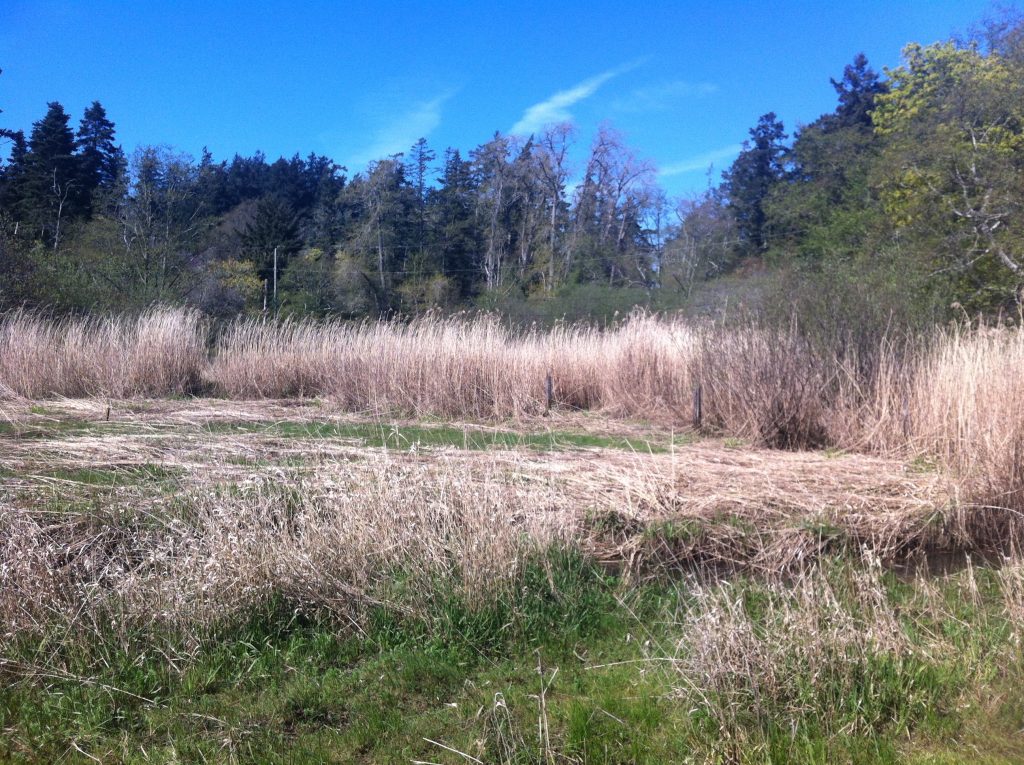
(http://metchosinmarine.ca/gf/triglochin-maritima/)
Mason Bees.. The best pollinator for spring and early summer pollination of your fruit trees.
NOTE: I have updated this 2015 post in order to make it appear closer to the other mason bee information

(http://metchosinmarine.ca/gf/triglochin-maritima/)
Once the temperatures are up on sunny days, cocoons placed out near their prospective homes will start cutting their way out of the cocoons and fly off to get materials to fill their own tubes for the coming year. If there are remaining cocoons unopened after a week and a half of warm weather, then it may be worthwhile to check them for parasites. You can open a cocoon with a sharp box-cutter blade, carefully picking away at the tough cocoon. If the bees are healthy they will leave within a few minutes. You may encounter the following parasites and if so you should get rid of them. I have included some here that I not quite sure about as well. These parasites are natural, but when, as with many monocultures we concentrate many of one species together, the chance of pests finding a good place to thrive is increased.
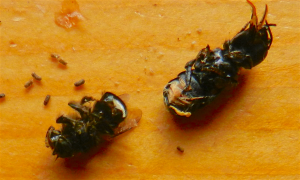
NOTE: I have updated this 2015 post in order to make it appear closer to the other mason bee information
I will use this page to mount pictures sent back by customers who have made their own houses out of recycled materials or have set up experiments to test the materials.
There are various values in the commercial community in regards to increasing the presence of Mason Bees as pollinators. Some items for growing Mason bees currently on the market tend to appeal more to the human than the bee, and people are willing to pay for these.
However in order to increase the populations of Mason Bees for our interests in pollination of our plants, more emphasis could be placed on providing homes that bees find favourable for their sole purpose: that of increasing their progeny.
At recent “Seedy Saturday” events, I have been encouraging people to use recycled materials to build houses and then to send back pictures of what type of structure they have come up with. Below are a few examples for a start.
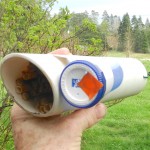
I do have available for sale several of these 2 inch water pipes with 2 dozen + tubes inside for $15.00.
NOTE: I have updated this 2016 post in order to make it appear closer to the other mason bee information
ARCHIVAL: This post has been re-dated from 2016 in order to position it closer in the blog to Mason Bee Information
NOTE: I have updated this 2015 post in order to make it appear closer to the other mason bee information
Mason bees for sale at $6.00 per dozen:
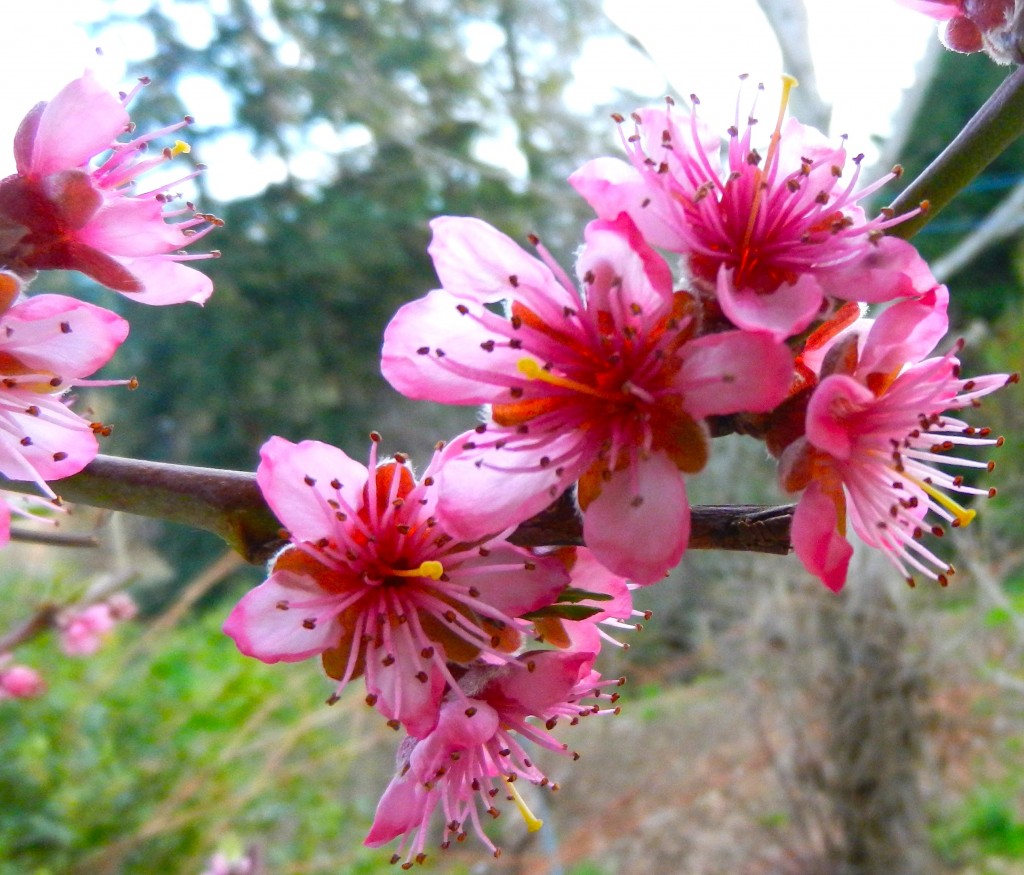
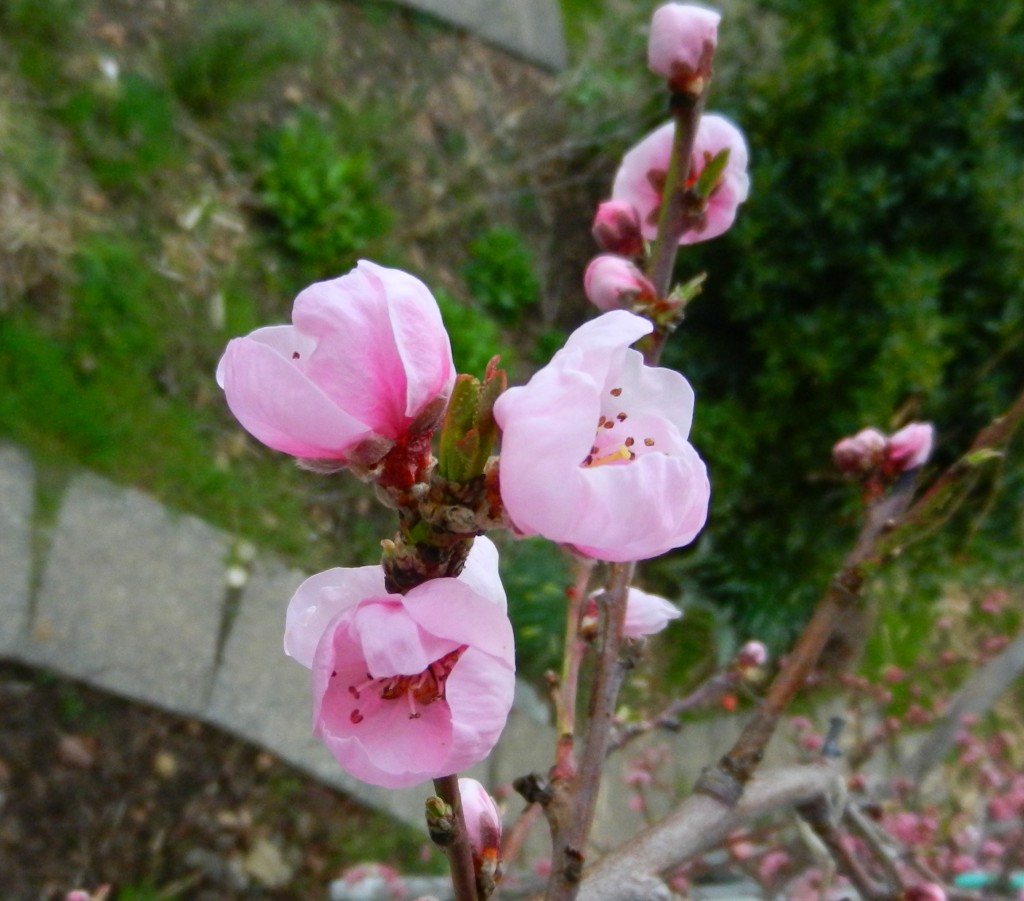
I have put out my first set of Mason Bees from the refrigerator as the peaches and nectarines are in bloom. There are also a few honey bees working the flowers, but once the Mason bees are active, they are much more efficient at pollinating than honey bees.
I have produced away more of these cocoons than I need for my garden and orchard so see this page for information on purchasing mason bees: https://www.gfletcher.ca/?p=1
I am now selling mason bee cocoons $6.00 per dozen which you can order and then pick up from my farm in Metchosin British Columbia.
e-mail garryf use the at sign gmail dot com, or use the e-mail form on the page linked above.
NOTE: I have updated this 2015 post in order to make it appear closer to the other mason bee information
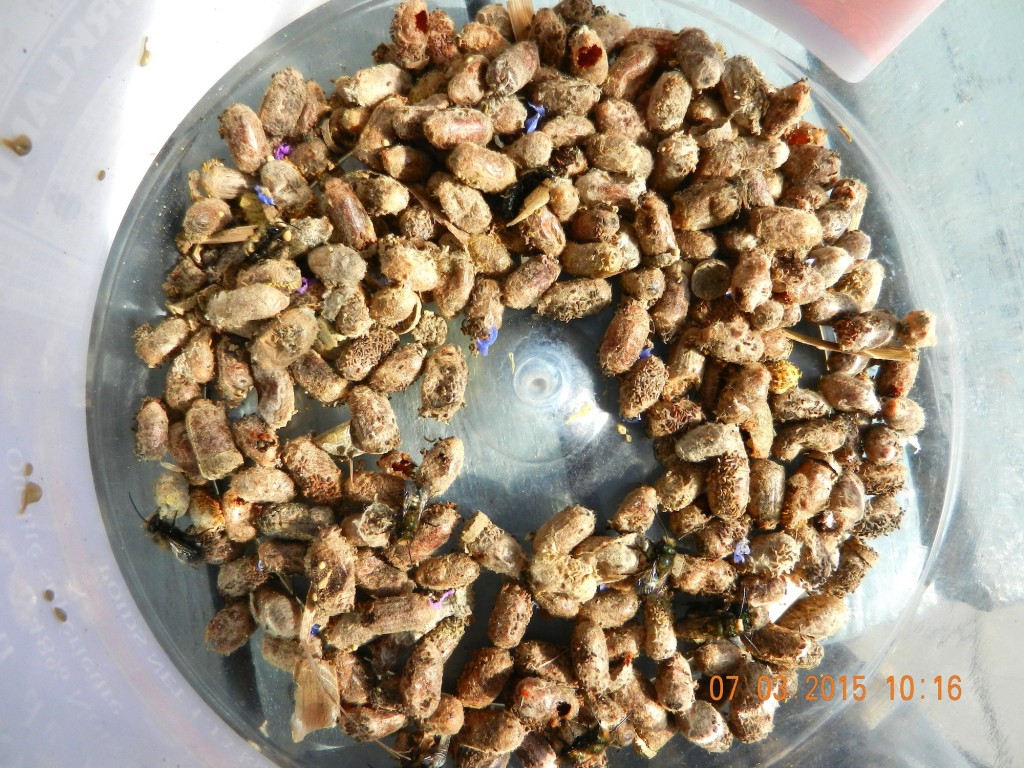
I am now selling mason bee cocoons which you can order and then pick up from my farm in Metchosin British Columbia.
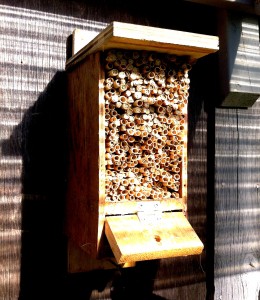 I raise my blue orchard bees in boxes like this, similar to a birdhouse without a front. The mud-filled tubes are complete, and they are still working on the open ones. The small compartment at the bottom, with a lid and hole in it, is for depositing a handful of cocoons into when I remove them from the refrigerator. This is done after their winter hibernation when I need pollinators for various fruit trees.
I raise my blue orchard bees in boxes like this, similar to a birdhouse without a front. The mud-filled tubes are complete, and they are still working on the open ones. The small compartment at the bottom, with a lid and hole in it, is for depositing a handful of cocoons into when I remove them from the refrigerator. This is done after their winter hibernation when I need pollinators for various fruit trees.
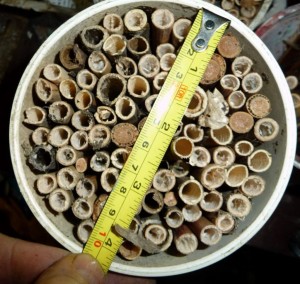 A section of 4 inch drain pipe can be used as a mason bee house also. A 5 cm. overhanging lip at the top keeps the water out. I also have a limited number of Phragmites reed tubes for mason bee homes . They average 6 inches in length and can be packed horizontally in any container as long as it is waterproof. Limited amount available at $5.00 per dozen.
A section of 4 inch drain pipe can be used as a mason bee house also. A 5 cm. overhanging lip at the top keeps the water out. I also have a limited number of Phragmites reed tubes for mason bee homes . They average 6 inches in length and can be packed horizontally in any container as long as it is waterproof. Limited amount available at $5.00 per dozen.
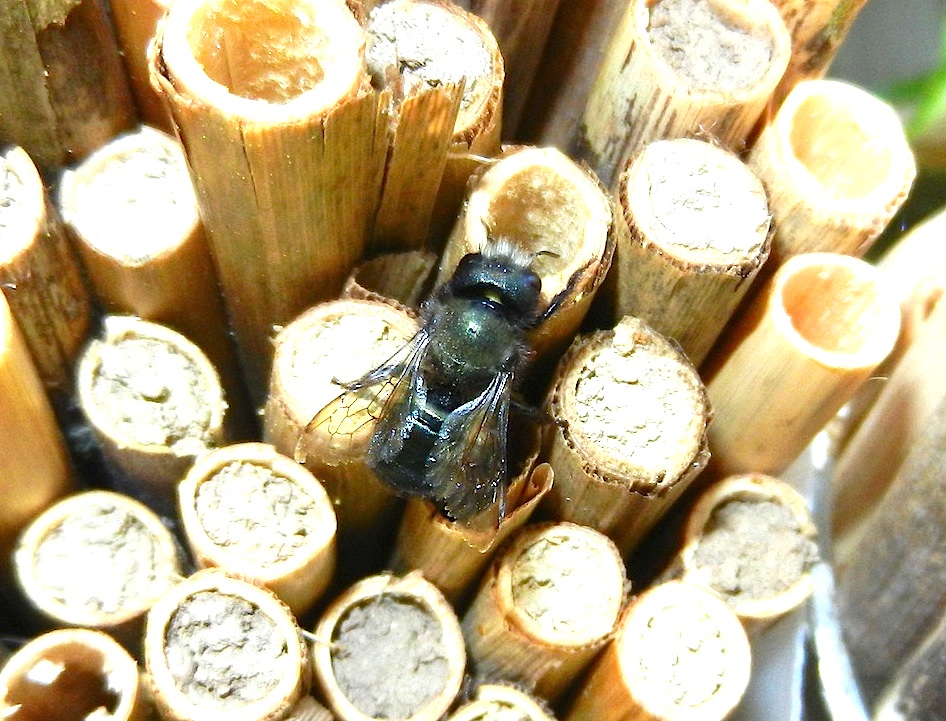
See other postings here on Mason Bees :
Contact: garryf use the: “at sign” gmail dot com
Well thats a takeoff on what I have decided to call my Mason Bee operation.. Its now MASON BEES METCHOSIN. Below are the latest versions of a poster and simplified yearly directions I have on a business card.
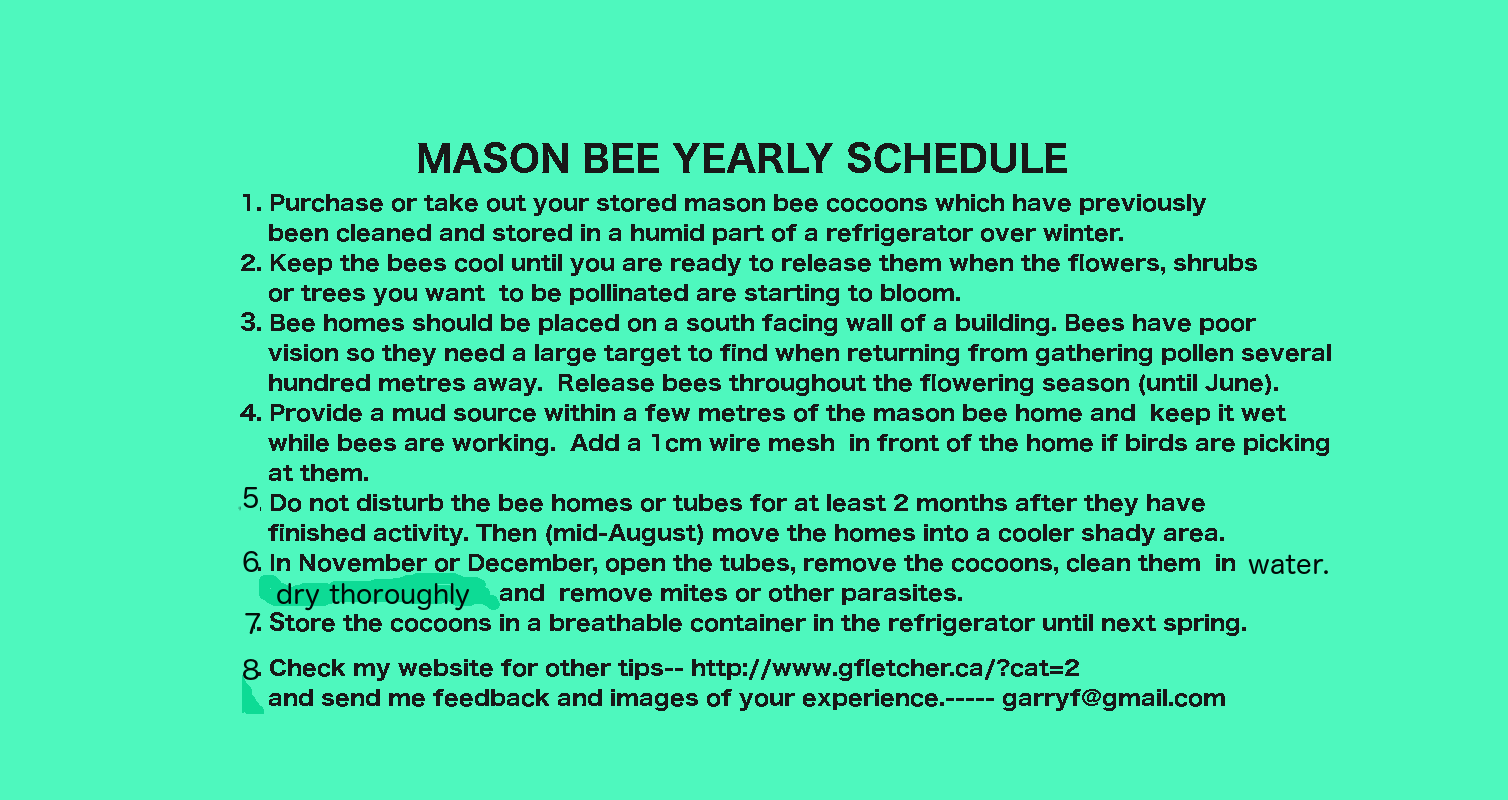 Scroll back through the mason bee postings to see samples of houses made from repurposed/recycled materials.
Scroll back through the mason bee postings to see samples of houses made from repurposed/recycled materials.
Note: I have created this 2017 posting to bring it closer to the other mason Bee information
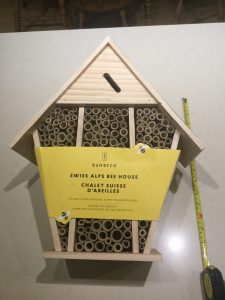 Recently this Mason Bee house has appeared on the market and it has to be one of the worst pieces of equipment I have seen for encouraging mason bees. I have recently sent a request to Costco management requesting that this item be removed from their shelves.
Recently this Mason Bee house has appeared on the market and it has to be one of the worst pieces of equipment I have seen for encouraging mason bees. I have recently sent a request to Costco management requesting that this item be removed from their shelves.
The following are the reasons that I have made this criticism:
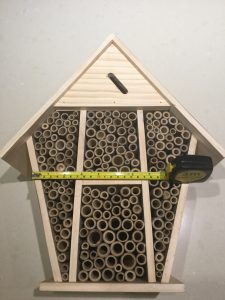 1. The tubes are made of bamboo and are impossible to break open to remove cocoons for cleaning to prevent parasitic mite infection. The manufacturer even gives directions to put them back outside in the spring without cleaning out the parasitic mites. This is totally irresponsible as it will lead to an increase in mite population since you are creating a monoculture which encourages parasites.
1. The tubes are made of bamboo and are impossible to break open to remove cocoons for cleaning to prevent parasitic mite infection. The manufacturer even gives directions to put them back outside in the spring without cleaning out the parasitic mites. This is totally irresponsible as it will lead to an increase in mite population since you are creating a monoculture which encourages parasites.
2. The maximum depth of the tubes is less than 4 inches. Mason bees need at least a 6 inch depth. Also some of them are open ended allowing parastic wasps in the back end as well.
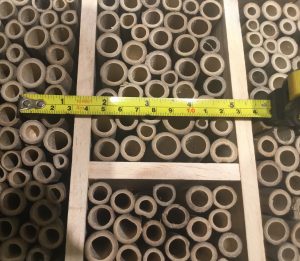 3.The diameter of many of the tubes is away too large. The ideal size for mason bees is 5/16 inch.
3.The diameter of many of the tubes is away too large. The ideal size for mason bees is 5/16 inch.
4. The diameter of many of the tubes was too small for mason bees.
5. Some of the tubes were glued in upside down with nodes at the front end preventing bees from entering.
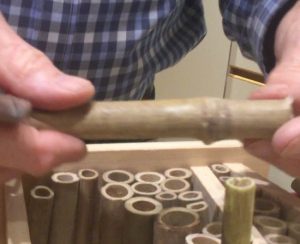 6. Many of the tubes had nodes near the centre, rather than at the bottom end, meaning they were less than 2 cm deep and no sane mason bee would use those tubes.
6. Many of the tubes had nodes near the centre, rather than at the bottom end, meaning they were less than 2 cm deep and no sane mason bee would use those tubes.
The partial solution if you end up buying one of these things if you can’t return it, is to remove all the tubes as in the video below, and fill them or replace them with disposable phragmites or cardboard tubes.
See an update on how to modify these tubes if you happen to be stuck with having bought a house like this.
ARCHIVAL: This post has been re-dated from 2016 in order to position it closer in the blog to Mason Bee Information
Selling mason bees and reed tubes today proved to be very successful. I had registered for a table selling mason bees cocoons and Phragmites reed-stem tubes at the Victoria Seedy Saturday.
My schedule for attending upcoming Seedy Saturdays is as follows, also you can follow the links to their websites for more details.
February 27: Sooke Seedy Saturday
March 6: Nanaimo Seedy Sunday.
March 12: North Vancouver Seedy Saturday
April 2: Surrey Seedy Saturday
I produced the poster below to identify my location at the seedy Saurdays. A big thankyou to all who were willing to get engaged with raising mason bees and I encourage all those who buy my bees and tubes to give me feedback on their experience with raising them.